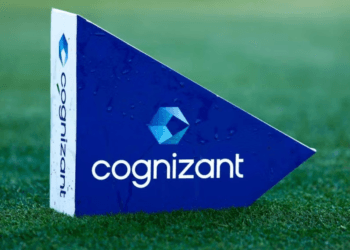DBT Bureau
Bhubaneswar, 31 July 2024
Bugs and Defects after Production are not uncommon, but with Spec2TestAI™ defect prevention platform, that’s about to change.
A recent software defect released during an update rendered 8.5 million users unable to perform various routine business functions. The impact of this single defect was widespread, affecting everything from rail systems and air travel to small businesses, banking, emergency operations, and hospitals. While such issues occur with some regularity, they rarely reach this level of public visibility. Over the years, defects and bugs have caused catastrophic car failures, power outages, deadly medical device malfunctions, and costly banking errors. Given the complexities of today’s software development processes, it’s remarkable that outages of this magnitude aren’t more common. This incident underscores the remarkable skill and diligence of professionals working in the mass-deployed software development arena.
There’s a fundamental problem that exists in the Software Development Life Cycle (SDLC). Quality is not getting addressed early enough in the process, reinforcing the inherent poor-quality problem. According to the Consortium for Information & Software Quality in their January 2022 study, The Cost of Poor Software Quality, there’s a 2.4 trillion dollar annual quality problem in the United States alone, stemming from bugs and defects. This number now invoked underwhelming concern, but as the effects of a single defect in an update rippled its way through its reach reputational and financial fallout becomes a more palpable figure. We now can see how one defect can inadvertently be responsible for over a billion dollars in lost revenue from debilitated services, it may take years to fully quantify.
The Agile methodology, or an Agile hybrid, is the most widely adopted standard for Software Design and Development. Agile prioritizes the ability to react nimbly to feature, function, and design changes to satisfy additional requests while concomitantly maintaining quick release schedules. Agile approaches to project delivery have been extremely beneficial for narrowing the focus of development efforts and increasing the speed of delivery to production. However, the speed required to achieve ever-shortening timelines increases the “pressure to deliver” on every SDLC team member, including those gathering the requirements. The need for speed introduces unintended risk factors in a series of events that are already vulnerable to risk by nature. Hastening through the SDLC, particularly in the requirements stage can easily result in missed, misstated and/or ambiguous requirements which if not corrected or interpreted correctly, become preventable defects.
But how is it that these bugs and defects make it through the SDLC to be released in production if the software or update is Quality Tested before release? There lies a very large part of the problem. Today, Quality is almost always addressed at the end of the SDLC. Rather than being introduced at the requirements phase and managed throughout the SDLC process, quality is tested after coding with very little pre-development insight. The process itself is conducive to leaving the nuance and ambiguities open to interpretation by the Development and Quality Assurance teams. Open to interpretation leads to open to bugs and defects causing gaps and misalignment between software product design, code development, and quality testing.
The Founder of AgileAI Labs, Inc. Scott Aziz, saw the writing on the wall after years of leadership in the Quality Engineering field. He understood that when it pertains to quality test development, directly aligning to the requirements and acceptance criteria is a software quality imperative. According to a study in Crosstalk, The Journal of Defence Software Engineering, 64% of all bugs and defects originate in the requirement analysis and design phase. Years of professional experience and frustration dealing with poorly developed requirements is precisely why Aziz began tackling what he perceived to be “fixable” defect-introducing problems. Determined to create a solution, in May of 2023 after thousands of hours of LLM training, prompting and testing, Aziz had developed the first iteration of Spec2TestAI™.

Some of the Spec2TestAI™ Defect Prevention Platform’s Key Features:
Defect Prevention Analysis: The tool’s emphasis on defect prevention automatically removes defects aligned to industry best practices, and its powerful patent-pending AI engine eliminates ambiguities in user stories with just one click.
Company-Specific Uploads: Provide the platform with company-specific context, formats, security requirements, and more for analysis against current project requirements and acceptance criteria.
Project Health Dashboard: Get Real-Time insights on defect potentials and the status of your project’s overall health and effortlessly make corrections as needed.
Comprehensive Test Case Generation in < 6 minutes: Functional, Edge, Negative, Security, UAT, etc.
Industry Standardization Built-in: SDLC Best Management Practices are Applied. Behavior Driven Development (BDD) feature and step files are automatically generated, saving hours.
Security Frameworks: Based on OWASP top 10 standards.
Automated Code Frameworks: Multi-language support for Java, JavaScript, Python, Ruby, etc.
Transparent Traceability and Audit Readiness: This transparency is invaluable during audits to showcase adherence to prescribed standards.
After the mass outage that occurred last week, companies should be made aware there’s a revolutionary platform on the market that provides a level of detailed requirements analysis and defect prevention the likes of which have never been possible before. Spec2TestAI™ is an intelligent solution for reducing risk, improving productivity, and equipping teams with the tools they need to successfully navigate through the SDLC to meet project goals.





















